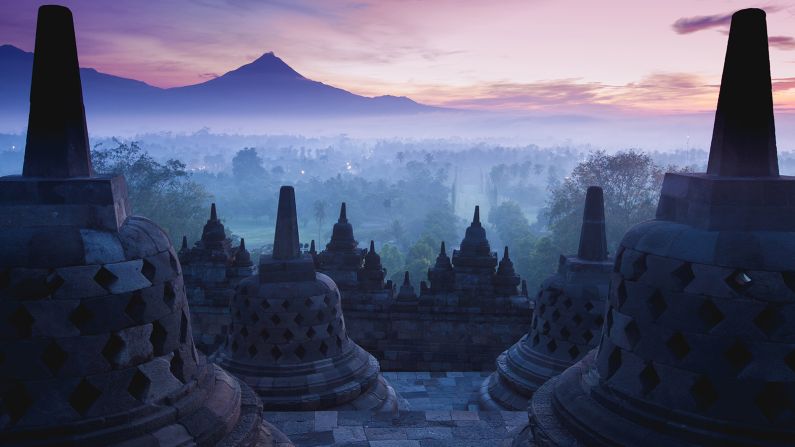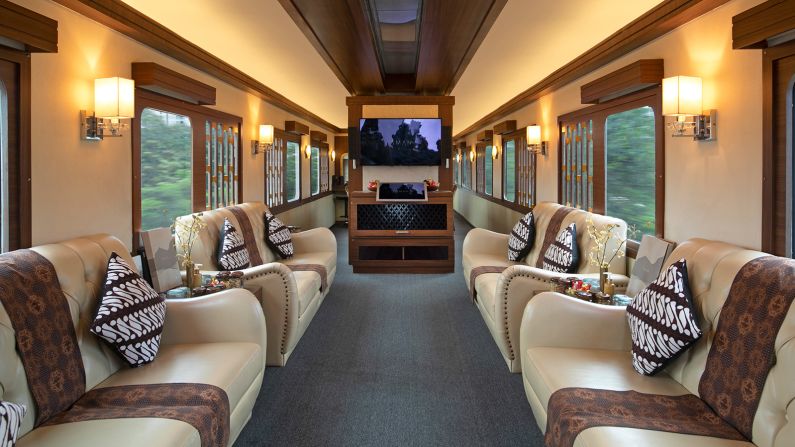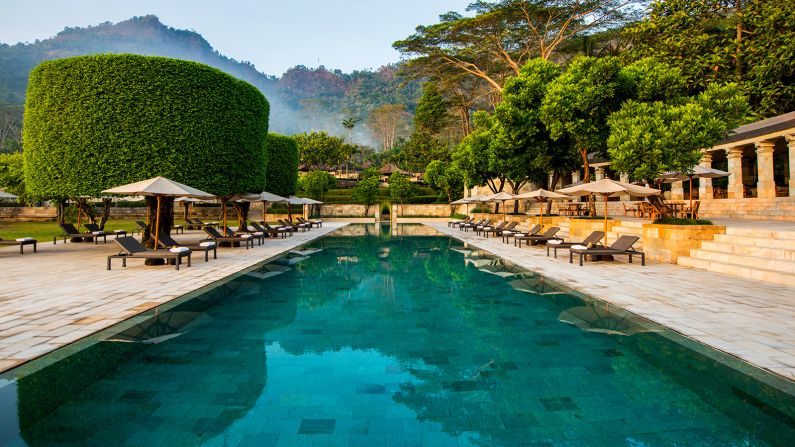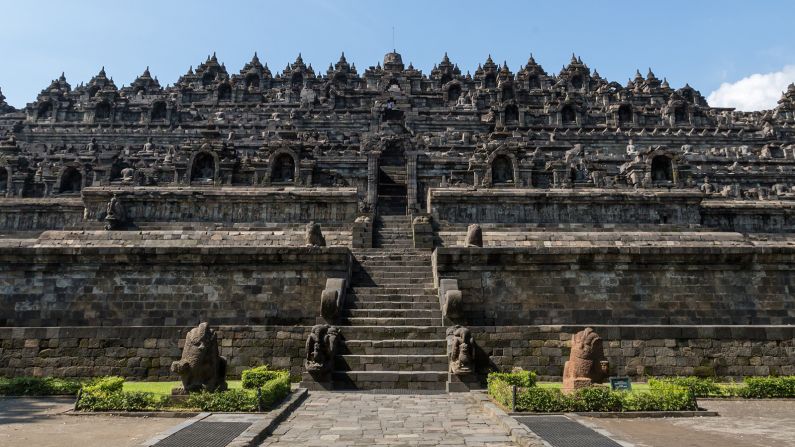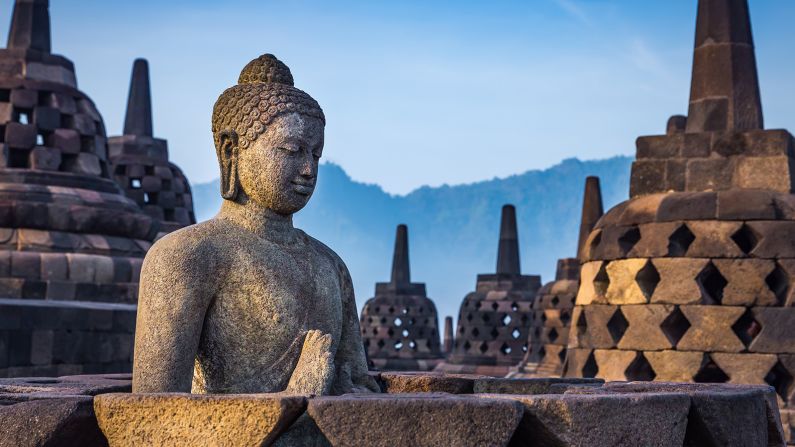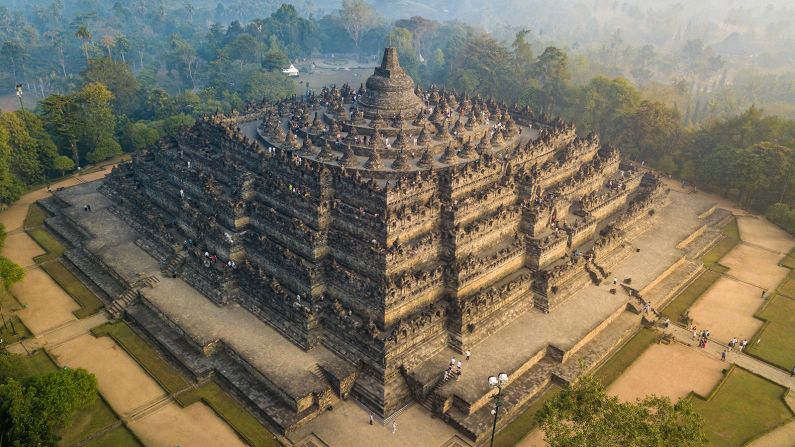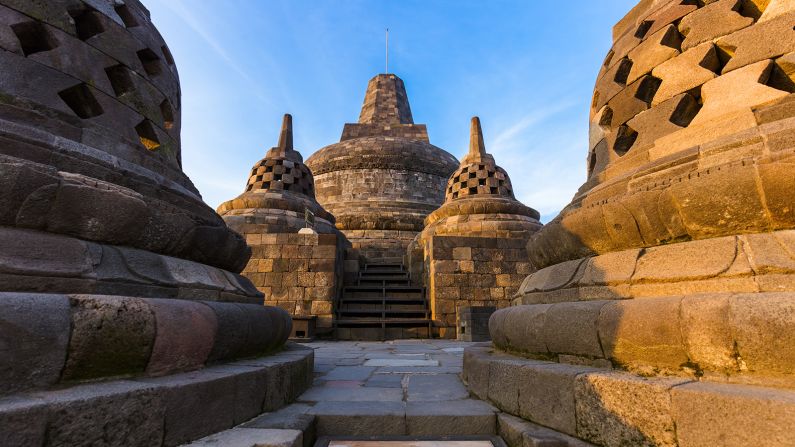Editor’s Note: This CNN Travel series is, or was, sponsored by the country it highlights. CNN retains full editorial control over subject matter, reporting and frequency of the articles and videos within the sponsorship, in compliance with our policy.
Seated inside a plush train carriage fitted with traditional Javanese batik tapestries, paintings and books, travelers on board Indonesia’s newest luxury train are surely in agreement that the journey is as important as the destination.
Why else opt to take a seven-hour train ride instead of a plane to Yogyakarta, home to Indonesia’s famed UNESCO-listed Buddhist site, Borobudur.
Called The Journey Through Java by Train, the experience is open to travelers booked for a stay at Amanjiwo, an Aman Resorts property in Central Java province.
With Indonesia having lifted its Covid-related travel restrictions for vaccinated tourists, Amanjiwo’s staff hope the unique rail journey will entice international crowds to come and learn more about Javanese culture.
“The Journey Through Java by Train was launched during the pandemic and received positive feedback from the domestic market,” Jann Hess, Amanjiwo’s general manager, tells CNN Travel. “Our mission moving forward is to bring this experience to a wider audience around the world.”
Indonesia’s first luxury sightseeing train
Operated by KAI Wisata, a high-end subsidiary of state rail operator PT Kereta Api Indonesia, the new train is said to be the first and only luxury rail experience of its kind in Indonesia.
It begins in capital city Jakarta and ends in Yogyakarta, a city famed for Javanese arts and culture. From there, it’s an hour’s car ride to reach Amanjiwo.
Train guests are served Aman-style breakfasts and lunches on board by staff who wear hotel uniforms inspired by traditional Javanese attire.
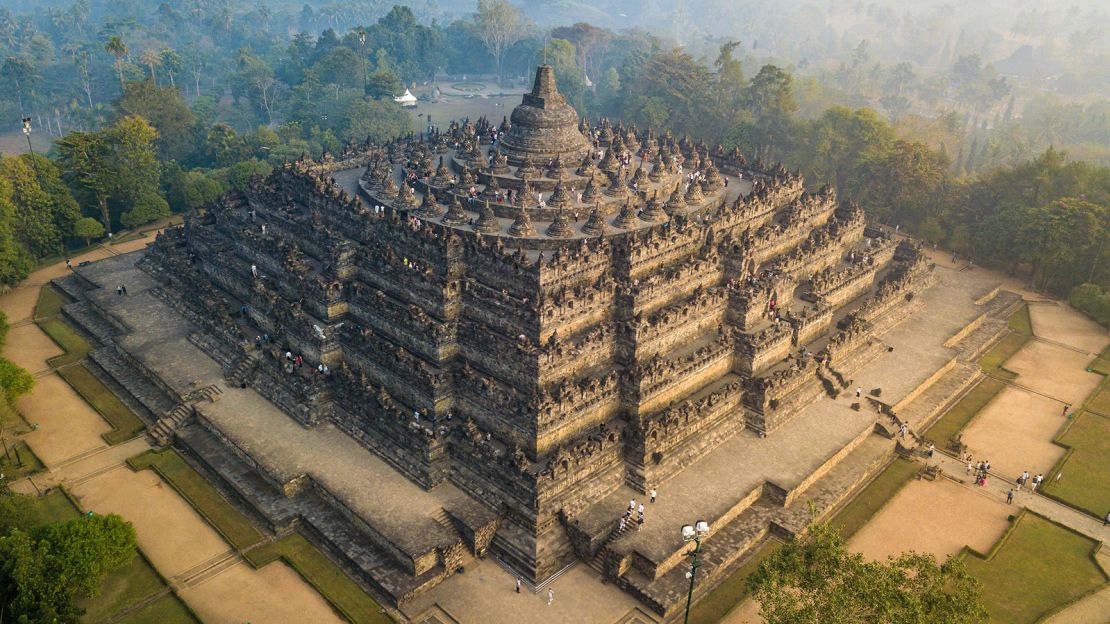
In addition to the gorgeous scenery, a major draw is the presence of the resort’s resident anthropologist, who offers valuable insights into the region during the trip.
“Java is known as a mystical land and its culture influenced other regions in Indonesia such as Bali,” says Hess.
“There are so many stories, myths, legends and wisdom which we can learn from the lecturing sessions from anthropologist Patrick Vanhoebrouck during the train journey, which encompasses spirituality, architecture and arts. This learning will build a sense of curiosity and encourage cultural respect and exchange by the time our guests arrive at Amanjiwo to continue the discovery further.”
The Journey Through Java by Train can be booked together with a two-night package at Amanjiwo and can also be chartered by guests staying at the hotel.
Meet Amanjiwo’s resident anthropologist
Vanhoebrouck, originally from Belgium, moved to Yogyakarta for the first time in 1997 to work in the furniture and antique exporting business.
“Yet during my stay here I quickly became fascinated with the local Javanese culture, its peculiar expressions through performance arts (wayang cycles), its philosophical and traditional aspects of how to lead life,” says Vanhoebrouck.
He was so intrigued that he obtained a bachelor’s degree then a master’s degree in anthropology in the United States and the Netherlands before moving back to Indonesia permanently in 2010.
“As an anthropologist specializing in Javanese spiritual culture and practice … I can confidently answer that Central Java is a rich and vibrant playground for the spiritually minded, as the landscape is literally dotted with both built and natural sacred sites,” he says.
Since 2019, Vanhoebrouck has been working with Amanjiwo conducting evening lectures and setting up spiritual and cultural activities for guests. When he isn’t at the resort, he coordinates retreats focused on Javanese wisdom and healing powers while continuing his research on Javanese culture.
During the train ride through the mountainous valleys, guests take in typical landscapes of Java – rice fields, tropical forests with rolling hills, volcanoes and important rivers in the background – while listening to Vanhoebrouck’s anecdotes.
A guide to Borobudur, the world’s largest Buddhist temple
Upon arrival at Amanjiwo, guests are fully equipped with knowledge to better appreciate the many historical attractions around the area.
“Amanjiwo, located in the area Kedu Plain by the foothills of five major volcanoes, is surrounded by ancient archaeological wonders,” notes Vanhoebrouck.
The biggest showstopper of them all is Borobudur, an eight-minute drive from the resort.
This open-air Buddhist site, spanning over 2,500 square meters, is the largest Buddhist temple in the world.
Dating back to the 8th and 9th centuries, it was built in a pyramidal shape with three main tiers around a hill including five concentric square terraces, three circular platforms and a monumental stupa on top.
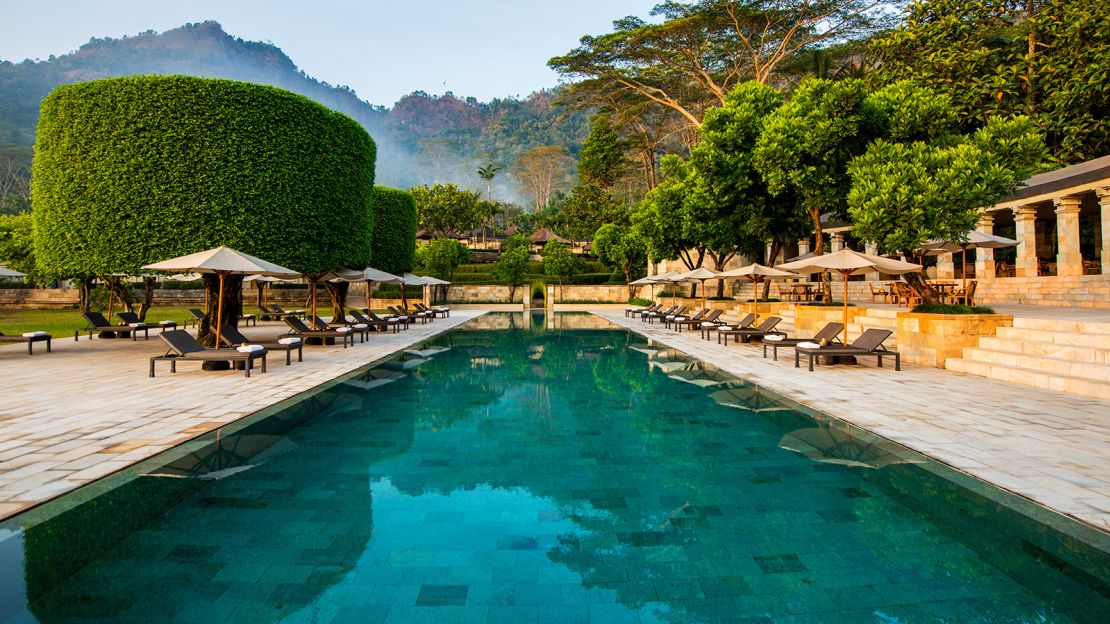
Some 500 Buddha statues and 72 stupas – each containing a statue of the Buddha – are scattered around the stepped temple. The walls and balustrades are covered in more than 1,600 detailed relief panels.
“One of the largest and most ornate monuments of the Buddhist world, Borobudur is unique in so many ways,” says Vanhoebrouck.
“Not ever before did a Buddhist society attempt at expressing the whole compendium of Buddha’s teachings onto a single standing stone mountain-shaped monument, and this is expressed through a breathtakingly exquisite and detailed sculpted iconography using dark andesite volcanic rock.”
With the site suffering from natural weathering for more than 1,000 years, the international community came together in the 1970s to fund a major renovation, which was carried out by UNESCO.
In 1991, it was inscribed as a UNESCO World Heritage Site.
The traditional pilgrimage path is a six-kilometer walk, slowly ascending each level of the pyramidal temple through its spiraling corridors. The trek usually takes about half a day.
For those who don’t have the time, Vanhoebrouck suggests a “median solution” by learning about the cultural background of Borobudur temple before visiting the most representative relief panels on each level – with the help of a local guide.
“Take a minute here and there in meditative poise to grasp the effort, time and purposes of the original builders and their dharma-oriented civilization … by facing one of the 500 plus Dhyani-Buddha (icons of Mahayana Buddhism) statues in their alcoves,” recommends Vanhoebrouck.
The upper galleries of the temple have been closed during the pandemic. Until the temple is reopened fully, Vanhoebrouck urges travelers to walk around the temple a few times, also called a kora – a meditative pilgrimage that involves repeatedly circling around a sacred site in a clockwise direction.
It’s popular to admire Borobudur from the top stupa at sunrise “over the misty plains below and behind the two main volcanoes on the eastern horizon” but Vanhoebrouck thinks other times and weather conditions offer their own charms.
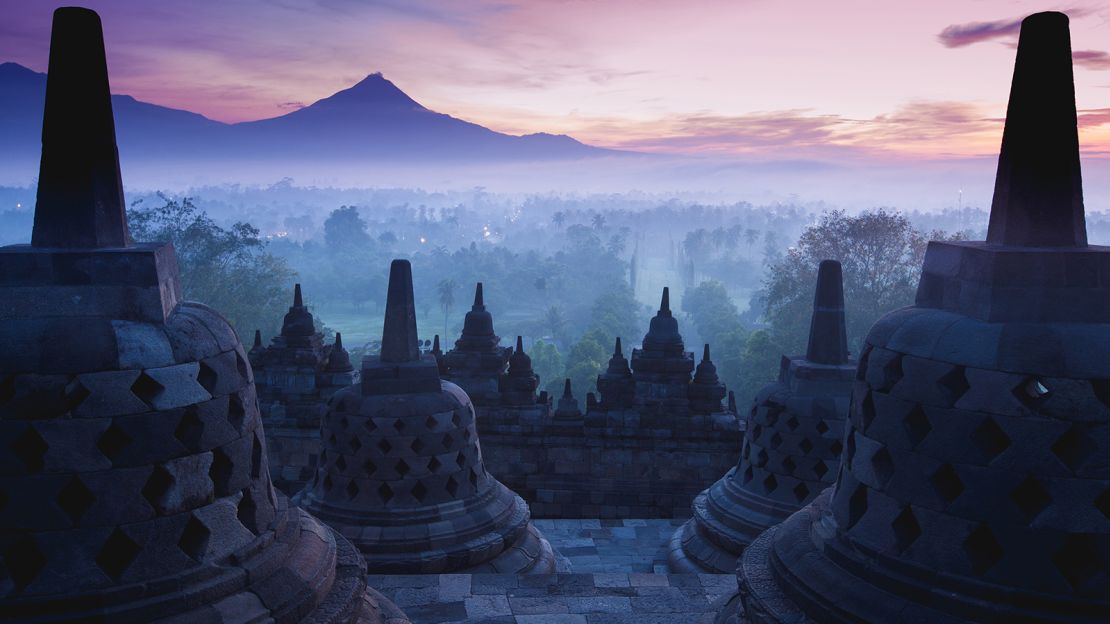
“The monument takes on special importance and a definite aural grandeur during the Ceremony of Waisak, a three-day Buddhist Celebration of the Buddha’s birth, enlightenment and passing stages,” he says.
Waisak Day, or Vesak Day, takes place on the full moon of the fourth month of the lunar calendar (usually in May or June).
“It’s a great moment to participate with hundreds of Buddhists from all over Asia and the world, observing a variety of ritual approaches, chanting and contemplation processions towards the temple, and through this maybe get a glimpse of what was actually intended by the designers or builders who conceived Borobudur in the first place in the early 9th century,” says Vanhoebrouck.
In terms of other favorite Central Java attractions to visit, the anthropologist points to the Hindu-Buddhist temples of the Mataram Kingdom – a sophisticated Javanese Hindu-Buddhist civilization that flourished from the 8th to 10th centuries – and the Royal Palaces (kraton) of Yogyakarta and Surakarta.
“Many natural springs, hilltops, caves and coasts are equally still approached reverentially by Javanese devotees,” says the Yogyakarta resident.
For those wishing to experience the rail journey, there are two more Amanjiwo packages available in 2022: From November 24-26 and December 24-26. In the first half of 2023, the train will run on January 20, February 17, March 17, April 7 and 21, May 5 and 19 and June 2 and 30.

